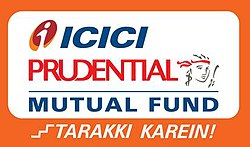Solution Oriented-Children's Fund

1Y
SI
Nav
Risk

1Y
3Y
5Y
SI
Nav
Risk

1Y
3Y
5Y
SI
Nav
Risk

1Y
SI
Nav
Risk

1Y
3Y
5Y
SI
Nav
Risk

1Y
3Y
5Y
SI
Nav
Risk

1Y
3Y
5Y
SI
Nav
Risk

1Y
3Y
5Y
SI
Nav
Risk

1Y
3Y
5Y
SI
Nav
Risk

1Y
3Y
5Y
SI
Nav
Risk
Raising a child is not only about love and care but also requires attention to financial matters. As the cost of education is increasing rapidly and life goals become increasingly expensive, it is essential to start a focused investment strategy early. A Solution-Oriented Children's Fund is a mutual fund created by fund managers specifically to equip parents and guardians with the capacity to finance their children's entire educational journey, including higher education, marriage, and entrepreneurship.
The nature of the fund is that it offers the benefits of long-term investment period management by a professional fund manager, who also requires a commitment from the investor to take this path, thus making the savings goal-oriented.
What Is a Solution-Oriented Children's Fund?
A Solution-Oriented Children's Fund refers to a specific type of mutual fund, specifically SEBI's solution-oriented schemes. It is committed to a single fitness target: assisting investors in creating wealth over a period to secure a child's future. Mainly, such mutual funds practice a mixed investing approach, which involves investments in both the stock and bond markets to achieve not only growth but also stability.
Compared to traditional savings or insurance-based child plans, these funds are market-linked and offer higher return potential, given the long investment horizon. They also have a compulsory lock-in period of either five years or until the child turns 18, whichever is shorter, thus assuring that the money will not be withdrawn until the due date.
Reasons to Select a Children's Fund!
The first point we would like to highlight is that it does not instill financial discipline. The lock-in period incorporated in the fund goes a long way in discouraging withdrawals, resulting in the funds accumulating and compounding over time. This is particularly critical in cases where planning to meet a specific future expense is necessary, such as college fees or wedding expenses.
Secondly, these funds are handled professionally. Skilled fund managers strategize investments, taking into consideration the risk and return by adjusting allocations between equity and debt according to market conditions and periods.
Another significant advantage is the tax efficiency. Generally, these funds are equity-oriented and, therefore, long-term capital gains tax is charged at a lower rate. This makes them more attractive than traditional fixed income instruments, such as fixed deposits or child insurance policies, which are typically taxed at the individual's income slab rate.
The low-maintenance nature of these funds is ideal for parents with busy schedules. Additionally, you can set up a SIP (Systematic Investment Plan) and let the fund grow without the need for repeated checking or adjustments. These funds can be viewed as a safety net for your child's future, significantly reducing the likelihood of having to rely on expensive loans or desperate and hasty financial solutions.
Benefits of Investing in a Children's Fund
- Long-Term Wealth Creation: These funds rely more heavily on equity in the early years, with their primary goal being capital appreciation. This is the main vehicle for beating inflation and satisfying future financial needs.
- Compounding Growth: If you start investing early, your investments will have more time to compound, which means that even small and regular contributions can grow into a substantial amount over time.
- Lock-in Ensures Discipline: The lock-in period helps in this regard, as it prevents you from withdrawing the money impulsively, ensuring your child's goals remain on track.
- Tax Benefits: As equity mutual funds, they are treated more favorably in terms of long-term capital gains tax compared to fixed deposits or debt schemes.
- Flexibility in Investment: An investor has the option of either investing through SIP or a lump sum, increasing the investment amount periodically, or even making changes after the lock-in period has expired.
- Rupee Cost Averaging: SIPs are similar to averaging purchase prices during market fluctuations, which reduces timing risk and leads to higher returns in the long run.
Risks to Consider
Although Children's Funds are created with the aim of security and discipline, they still have some risks:
- Market Risk: Children's Funds carry a considerable equity weight; thus, they are highly volatile and risky. These funds are highly volatile due to the stock market, which is driven by the news of the day.
- Interest Rate Risk: Only if the part of the fund that is invested in debt is influenced by interest rate fluctuations, the overall return may be affected.
- Liquidity Risk: These funds, due to the lock-in period, offer no easy way to cash in in case of an emergency.
- Fund Manager Risk: The fund's performance directly depends on the fund manager's decisions. A negative strategy and inappropriate timing may hinder the fund's growth.
- Time Horizon Risk: Usually, such funds are recommended for long-term investments. If you are investing for a short period, the ups and downs in the stock market may not be offset by growth.
Taxation of Children's Funds
Funds following the children's solution-oriented tax structure are similar to equity mutual funds. In case you decide to redeem within one year, the gains will be classified as Short-Term Capital Gains (STCG) and will therefore be taxed at the all-India rate of 15%. If you decide to hold your investment for more than one year, the profits exceeding ₹1 lakh will be considered Long-Term Capital Gains (LTCG) and will be taxed at 10%.
Dividend income is considered taxable income and is added to your total income, which is then taxed at the applicable rate for your income tax slab. In addition, if the dividend income exceeds ₹5,000 in a financial year, TDS will be deducted at the source.
Consider consulting a tax advisor who can help you gain a better understanding of the situation based on your own income and investment profile.
How to Invest in a Children's Fund
Investing in a Children's Fund is simple and accessible:
- Choose the Investment Mode: You can opt for SIPs to build wealth gradually or make a lump sum investment if you have a sizeable amount.
- Start Early: Begin investing when your child is young to maximize compounding benefits and reduce future financial stress.
- Select the Right Fund: Look for a fund with a strong long-term track record, reasonable expense ratio, and an experienced fund manager.
- Stick to Your Plan: Avoid early withdrawals and continue investing until your child's goal is near.
- Review Annually: Reassess your portfolio and financial goals regularly to ensure they're still aligned with your child's future needs.
Get In Touch
Interested in exploring more about JezzMoney Mutual Fund Distributors Software? Submit the form, and we will respond quickly.
Get Expert Advice on Investment in Mutual Funds!
- Certified mutual fund distributors around India will reach out to help you build your future.
- Connect with trusted mutual fund distributors and find them from your city and pincode area.
- JezzMoney is only the mediator to help you connect with these certified professionals.
- It is your obligation to gather accurate information when you receive contact from our platform.